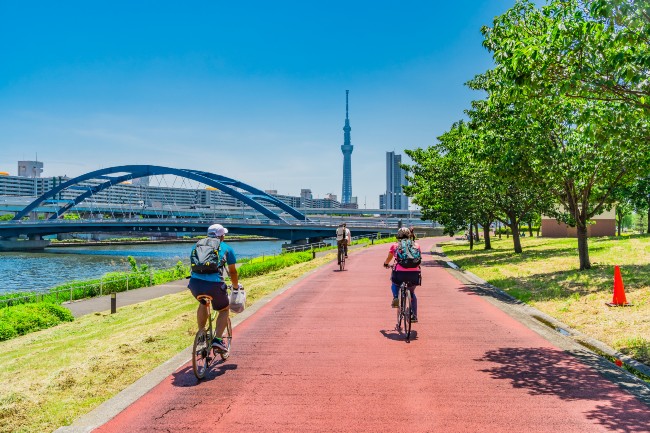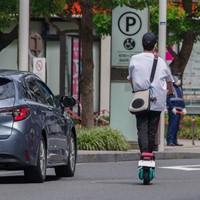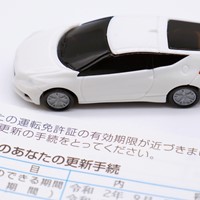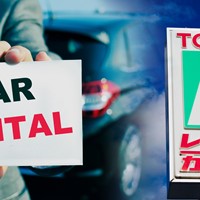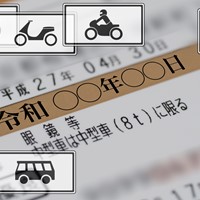Cycling in Japan: Bicycle Rules & Regulations
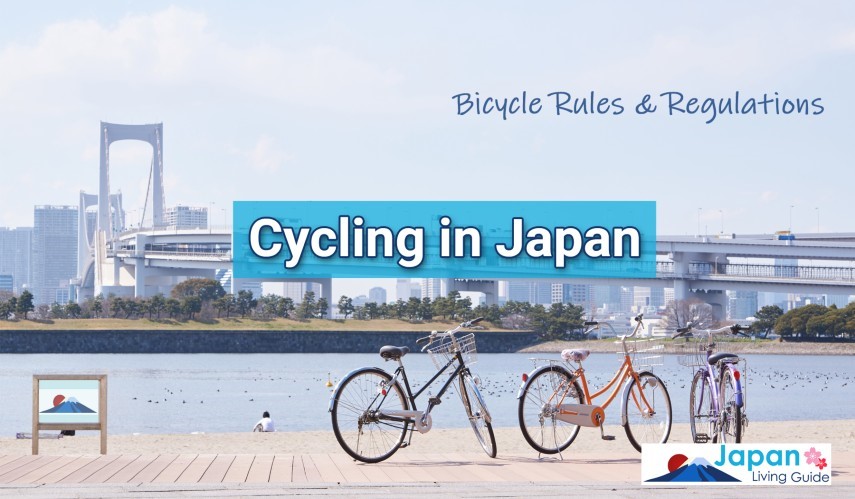
Cycling in Japan allows you to experience a side of the city that most people don't get to see. Unchanged neighborhoods, hidden temples, charming family-run stores, and parks and museums may all be explored more easily on two wheels than by train or even car. There is something for everyone, whether you ride a top-of-the-line imported model or a single-gear bike. Simply master a few Japanese cycling rules and keep an eye out for pedestrians, and you're good to go.
Please read Where to Buy New and Used Bicycles in Tokyo if you are seeking for new and used bicycles in Japan.
Japan Bicycle Registration and Legal Requirements
When cycling in Japan, there are some restrictions and regulations that cyclists from other countries may not be aware of. To begin with, all bicycles must have a working front lamp and a rear reflector. Bells are meant to be a legal necessity, but this isn't enforced, and conflicting reports from Japanese officials even say it's unlawful to use a bell on the sidewalk.
Bicycle insurance is required in Tokyo and some other cities (read below). Bicycles must be registered with the authorities where they are used. The registration with the municipal government is only 500 yen and can be done at the time of purchase. Simply complete a form, and the store staff will provide you with a small orange sticker to place on the frame. Remember that you will almost certainly need to write your name and address in Japanese, so bring a friend who can assist you if you are unable to do so.
Important: Foreign residents and tourists should always carry a passport or a Japanese government-issued identification card. The police can and do stop bikes to check ownership, and it is a legal necessity for non-Japanese to have these documents at all times, so don't get caught without them.
Road Rules
Once you have registered and are ready to hit the road, keep in mind that cars in Japan drive on the left. Bicycles must also stay to the left of the street unless there are dedicated bike lanes or shared-use pathways for pedestrians and cyclists.
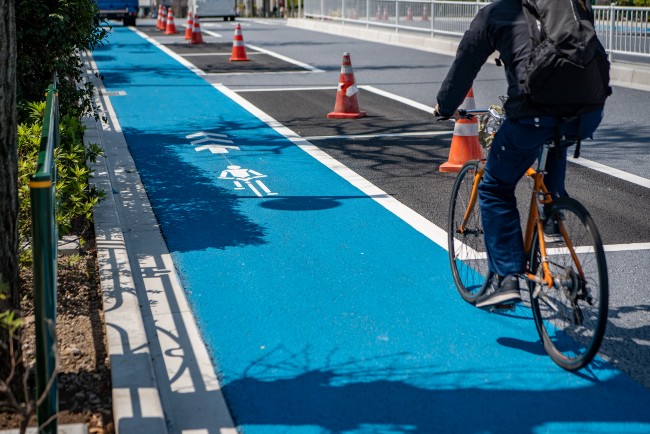
Pedestrians
If you're riding on a shared-use sidewalk, you must also adhere to pedestrian restrictions. This includes bikers who use the major thoroughfare. Keep left at the intersection, like the pedestrians do, and you won't go wrong. Remember that pedestrians always have the right of way, and many do not appreciate bells ringing to warn them of a bicycle approaching from behind.
Prohibited Activities
While cycling in Tokyo gives you a lot of freedom, there are some things you just can't do. Cycling while under the influence of alcohol is illegal, much like driving a car. While riding a bike, wearing headphones, using a cellphone, or carrying an umbrella are all technically prohibited. While these rules exist, don't be surprised if you encounter locals breaking them on a frequent basis.
Parking
Many of the busiest places don't even require you to park if you're just passing through or interested in seeing the sights. If the crowds are too big, simply get off and peddle your bike, then get back on when they thin out. However, when it comes to parking, there are plenty of options. To make riding as convenient as possible, designated street side parking places and underground sites monitored by security cameras are available.
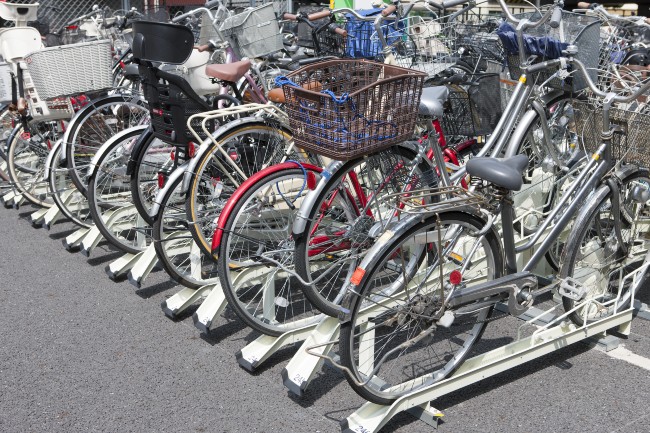
Bicycle parking in Japan may appear daunting at first, but it is generally simple to park a bicycle at or near major stations or shopping malls. Many areas have easily identifiable parking areas (see photo) that charge reasonable rates or are free in some cases. Most parking lots charge by the hour, with some charging up to 24 hours.
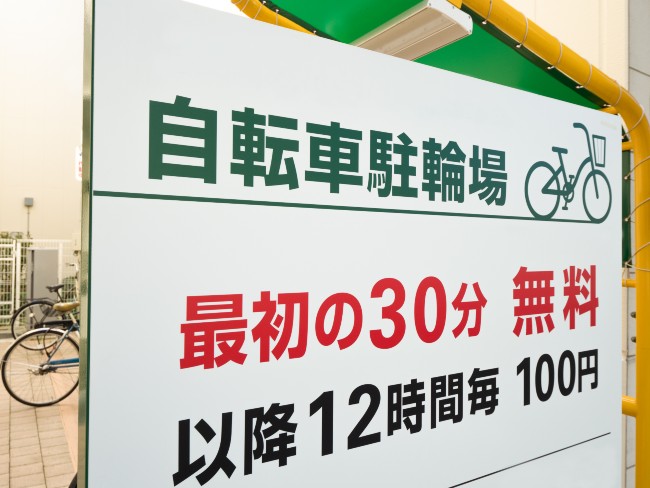
Parking your bike on the street and locking it to a railing is also an option, but local authorities do make the rounds and pick up bicycles in 'unauthorized' areas. Many unauthorized areas are marked with red no-parking signs at busy intersections or stations.
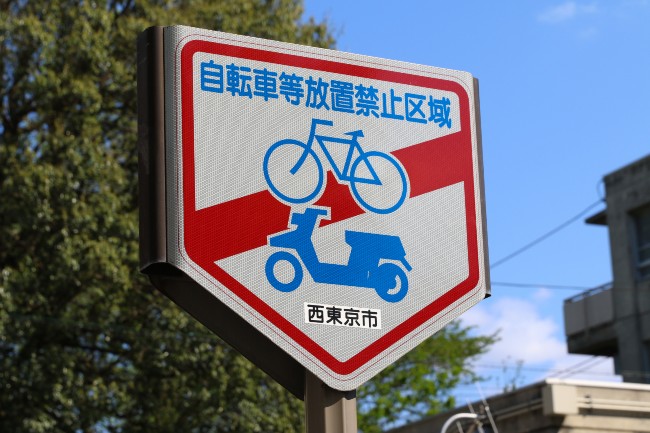
Reporting a Lost Bike
If your bike is discovered in an unauthorized area, you might get lucky and only get a warning sticker at first. You could also return to the parking spot and discover that your bicycle has vanished. Fear not—as long as you registered your bike in the first place, all is not lost. After a few days, you will receive a postcard informing you of the specific bicycle pound where your bike is being held.
Bring your ID to the pound, pay the fee listed on the postcard, and you'll be reunited with your bike soon. However, if no postcard arrives within a reasonable time frame, your bicycle may have been stolen.
Reporting a Stolen Bike
If your bike is stolen and not simply removed from an unauthorized parking area, there is a very good chance it will be returned one day. This is due in large part to the frequent police stops on cyclists, and few thieves ever ride a stolen bicycle for long; most prefer to abandon their pilfered bike near a train station or on the side of the road.
If the stolen bike is apprehended by local authorities, it will be entered into the above-mentioned system, and you will receive a postcard informing you of where to go to pick it up and the fee required for its release. To avoid having to pay the fee, report your stolen bicycle to your local police station as soon as you notice it is missing; the police report will negate the need to pay to get your bike back.
When reporting, you will need a form of identification and the ability to communicate in basic Japanese. The police will give you a form to fill out, and one of the boxes will ask for your bicycle registration number. As a result, many people keep a record of their bicycle registration numbers at home, but a photo on your smartphone will suffice.
All Bicycle Riders Must Enroll in Bicycle Liability Insurance in Tokyo (and some other cities)
The Tokyo Metropolitan Government requires all bicycle riders (including children) to purchase Bicycle Liability Insurance in Tokyo. This insurance will assist you in paying for any damage or injury caused to others if you cause an accident while riding a bicycle. This applies even if you do not live in Tokyo, as long as you ride a bicycle in Tokyo.
Information from Shinjuku Ward Office Website:
If you answered yes to either of the following questions, you are already covered by bicycle casualty insurance:
▶ If the fire insurance or car insurance (see below) your casualty insurance provides includes personal liability insurance as a special rider.
▶ If your bicycle has undergone an official safety inspection (fees charged) at a bicycle safety maintenance shop, and your bicycle has a TS mark (see illustration below) within one year of the inspection date.
Bicycle liability insurance is covered by a variety of policies. Please double-check your insurance and contact them for more information.
Traffic Accident Insurance for Minato City Residents
Minato-ku provides reasonably-priced personal traffic accidental insurance and bike liability insurance plan.
For further information, please read the official website.
There are more areas where request Bicycle Insurance. Please check the local office where you reside.
How Many People Can Ride on a Bike in Japan?
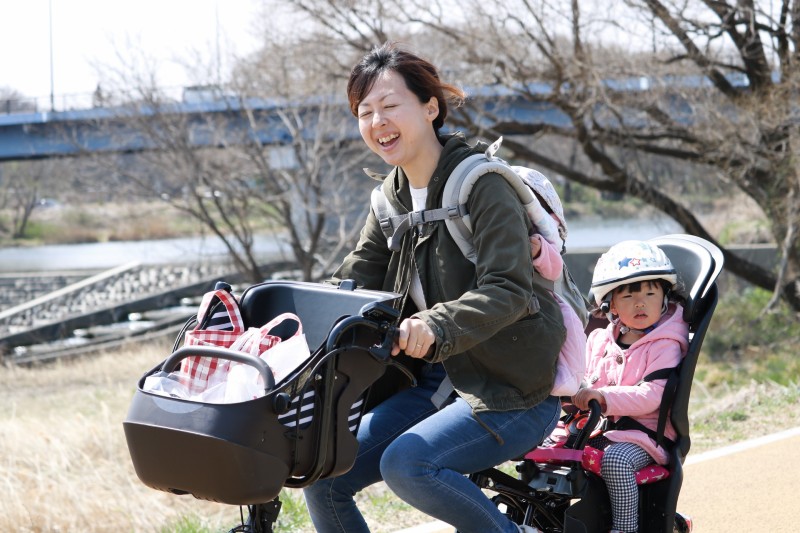
On a Standard Bicycle
If the cyclist is 16 years old or older, they are permitted to ride with one child under the age of six years old in an infant seat or on the rider's back, securely strapped in a baby carrier. You are not permitted to carry your youngster on your front (see the images below).
While helmets are not required, they are strongly advised to be worn for safety reasons.
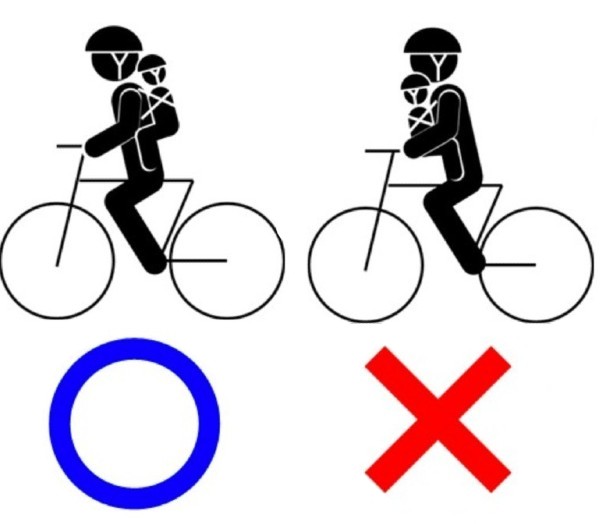
Image from Saitama Prefecture Police
On a Special Bicycle for 2 Children
You can ride with two children under the age of six if you are 16 or older and have a bicycle expressly equipped to carry two infants. Allow two children to sit in infant seats (front and back), or allow one child to sit in an infant seat while carrying another on your back with a baby carrier.
You are not permitted to ride with three children, as shown in the image below. For their protection, it is strongly advised that children wear helmets.
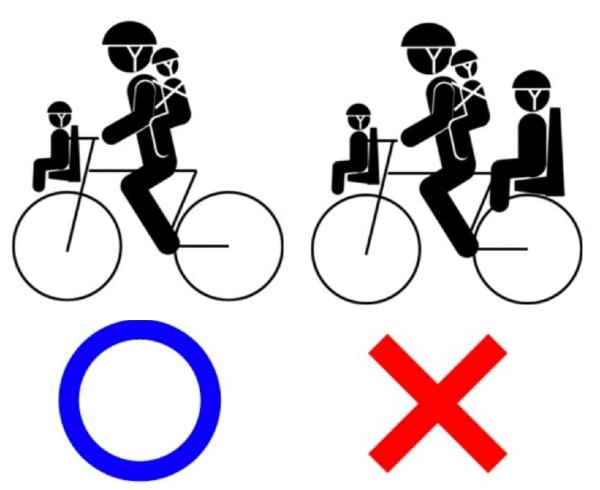
Image from Saitama Prefecture Police
Purchasing a Special Bike for 2 Children
It's critical to get a bicycle that complies with safety regulations.
Please double-check that the bicycle has the markings "BAA" (Bicycle Association Approved) and "幼児2人同乗基準適合車" by Japan Bicycle. The BAA mark is “幼児2人同乗基準適合車” for a bike that meets the more stringent specifications (a bike that complies with the two infants riding standard).
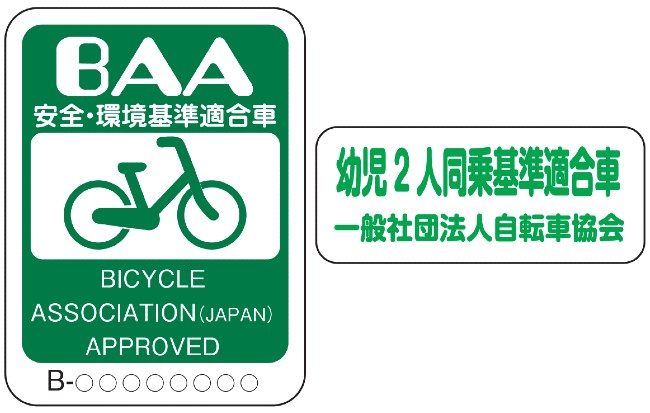
Cycling in Japan is for Everyone
Besides the obvious health and long term cost benefits of cycling in any major city, cycling in Japan will truly open up the Japanese capital for those opting for a day, a week, or even longer in the saddle. The city proper is an intricate maze of local neighborhoods, upscale shopping areas, and out and out tourist attractions plus much, much more that is surprisingly accessible when on a bike. So trade the hassle of train times, subway transfers and Japanese language-only buses for freedom on two wheels—you won't regret it.
